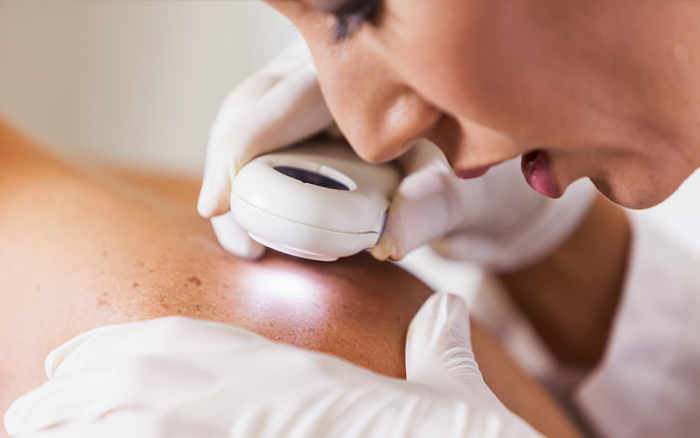Much like fungal infections are caused by fungus and viral infections are caused by a virus, bacterial skin infections are most often caused by staphylococcus bacteria.
Many people carry “staph” bacteria on their skin, and most of the time it’s completely harmless. However, when bacteria cause skin to become infected, the symptoms can be quite painful and sometimes very serious.
Here are five of the most common bacterial skin infections and what causes them:
Staph
Staph infections typically begin with a small cut, wound or even a fresh tattoo that gets infected with bacteria but can also occur when there is no visible break in the skin. The infection generally starts as an area of redness or swelling around the cut or sore and then a yellow crust on the surrounding skin begins to appear.
Staph infections can take many different forms and can range widely in severity. Symptoms can include a simple boil all the way to a very serious flesh-eating infection. The severity of a staph infection depends on how deep it has moved into the skin, how fast it spreads and how well it responds to antibiotics.
Boils
A boil is an infected hair follicle or oil gland that forms a pus-filled abscess or cyst under the skin. Boils are most commonly found on the face, neck, armpits, shoulders and buttocks. They begin as a hard, red and painful lump and eventually grow to become larger, more painful and filled with pus.
As the infection progresses, the skin around the boil also turns red and becomes warm and swollen, as do the lymph nodes. A fever can also develop in some cases. Typically, most boils will clear up on their own with the help of warm compresses at home. If they don’t go away after two weeks, call your doctor. The boil may need to be drained and an antibiotic prescribed to clear the infection.
Carbuncles
A carbuncle is a cluster of boils connected to each other under the skin. Typically, carbuncles appear on hairy areas such as the back of the neck, but they can also show up in other places on the body. Carbuncles begin as red bumps that are sometimes painful and can lead to fever, fatigue and the swelling of surrounding tissue and lymph nodes.
The staph bacteria get in through a hair follicle or small scrape or cut and cause an infection. Similar to boils, carbuncles are also filled with pus. They are contagious and can spread to other parts of the body — or to another person — through skin-to-skin contact or by sharing personal items.
In most cases, a doctor can drain carbuncles and an antibiotic will clear up any remaining infection. In rare cases, bacteria can get into the bloodstream, causing sepsis and widespread infection that can be fatal.
Cellulitis
Cellulitis is a type of staph infection that affects the deep layers of the skin. Cellulitis is common among people with weakened immune systems and those with diabetes, liver disease and skin conditions such as eczema and psoriasis. It is often treatable with antibiotics. In the most severe cases, intravenous antibiotics or surgery may be required.
Cellulitis happens when bacteria get into the skin through a break in the skin’s surface and spread. Symptoms typically begin with inflammation. Skin becomes red, warm and swollen and is often painful. Eventually, a sore or ulcer develops and can be accompanied by fever, nausea, numbness and additional swelling. Your doctor can send a culture of the affected area to the lab for a definitive diagnosis and perform a blood test to ensure the infection has not spread to the blood.
Impetigo
Most common in young children and babies, impetigo is a bacterial skin infection caused by staph that usually shows up around the nose and mouth. Tiny blisters form and eventually burst and ooze. Eventually, a golden-colored crust develops around the edges.
Impetigo is very contagious. It can be spread through an open wound or scratch and contact with someone who has the infection. Sharing clothes, bedding, towels, and other personal items can also pass impetigo from person to person.
How to Treat Staph Infections
Most bacterial skin infections can be treated with antibiotics like penicillin. In about half of cases, however, the infection is resistant to even stronger antibiotics. In cases where the infection has spread very deep into the skin and has affected the muscle tissue, the area must sometimes be surgically cleaned.
If you notice red lines developing around a wound, this indicates that the infection is spreading. Call your doctor immediately if you notice these lines or if the wound becomes progressively more painful.
Looking to Visit a Dermatologist?
Are you experiencing symptoms of a bacterial skin infection? U.S. Dermatology can help! Contact one of our board-certified dermatologists today. We have multiple locations throughout the country, so fill out our simple online form to get in touch with us. One of our local team members will reach out to you shortly to answer your questions or schedule an appointment for you to visit us soon.
Find a location near me
or

